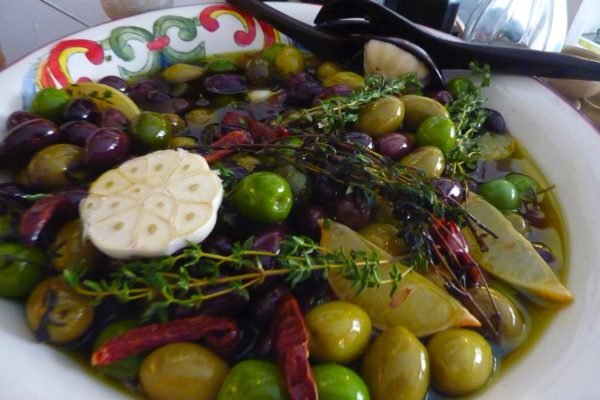1st Global Conference
Food and Drink in the 21st Century
including a guided walking and tasting tour of historical and cultural food and drink sites in Lisbon
Saturday 17th March 2018 – Sunday 18th March 2018
Lisbon, Portugal
Conference Abstracts and Papers
The “Private Language” of Food in Women’s Culinary Autobiographies
Ruchira Datta
Christ University, Bangalore
Key Words:
women, food, culinary autobiographies “private language”, experiential, empowerment, lived experience
The word “food” is often associated almost synonymously with the word “women”. Yet, women’s experience of food remains unexplored through history, literature as well as popular culture. In the 21st century, however, an emerging genre of women’s writing on food attempts to challenge traditional representation of women as nurturers and mere producers of food. This literary genre of culinary autobiographies not only account for women’s experience of food but also offers an understanding of food as an experiential language for women.
As such, culinary autobiographies are autobiographical accounts which provide a commentary on the sociocultural, economic as well as political contexts in which they are written. These accounts, therefore, emerge as a space for articulating women’s lived experiences within certain sociopolitical as well as cultural contexts. This paper studies the culinary autobiographies Monsoon Diary by Shoba Narayan and A Pinch of This and a Handful of That by Rushina Munshaw- Ghildiyal to offer a look at food as language, an experiential, “private language” in 21st century women’s writing.
This paper, therefore, serves as a bridge between the studies and movement within the field of food studies and the feminist theories and movements, merging the two discourses to challenge conventional notions of food as well as women. Analysing the selected culinary autobiographies this paper suggests that for women food is not a means of sustenance it is a means for articulating their identities and etching their memories. As a result, the paper uses Lynne Pearce’s theory of “private language” to further help understand the experiential, “private language” of food as a means of empowering women. In other words, the use of food as “private language” in culinary autobiographies function as a means of privileging women’s lived experiences and challenging conventional notions of food and women.
Reclaiming Fried Chicken and Watermelon
Christine Gregory
Marymount Manhattan College, USA
Key Words:
fried chicken, watermelon, African-American, stereotypes, reclaiming, cultural eating practices, white spaces, culinary pride, cultural empowerment
I am at a potluck in a room full of white people. As I move down the banquet table, I pause at the fried chicken and am immediately confronted with a dilemma. If I put it on my plate do I risk reinforcing a racist stereotype about “black people loving fried chicken”? Further down, there is an assortment of desserts, fruit salads, and sliced watermelon. I am already conscious of the fact that if I choose the fried chicken, a slice of watermelon is completely out of the question.
While fried chicken and watermelon are not inherently racist foods, they have come to be demeaning cultural symbols created in the 1800’s by whites who sought to portray emancipated blacks as dirty, lazy, and ignorant. It follows that in 2017, for many black people, the decision to eat fried chicken and/or watermelon in white spaces is fraught with tension between satisfying one’s personal taste preferences and affirming racist stereotypes.
This presentation explores African-Americans reclaiming fried chicken and watermelon as cultural symbols of empowerment. In this presentation, I examine how negative stereotypes about blacks loving fried chicken and watermelon have influenced their cultural eating practices and created a dynamic in which they deliberately choose not to eat these foods in predominately white spaces. I make an argument for reclaiming fried chicken and watermelon, through raising consciousness about the historical and cultural significance of these foods, as a means of economic self-sufficiency and rich culinary identity. Finally, I discuss my own journey from reticence to brazen intentionality about eating fried chicken and watermelon in the presence of white people; to both challenge negative racist stereotypes and reposition this controversial fruit/poultry combination as a source of culinary pride and cultural empowerment.
The Paradox of the Hungry Hipster: The Representation and Cultural Politics of Hipster Foodways
Katie LeBesco
Marymount Manhattan College, USA
Peter Naccarato
Marymount Manhattan College, USA
Key Words:
Popular representations of hipsters typically position them outside of mainstream culture, although many of the food practices that they are said to have adopted in recent years may undermine that assumption. Hipster food practices, as popularly represented, are fraught with ethical and political implications that challenge the presumed apolitical nature of the hipster identity. In this paper, we examine representations of hipster food practices, particularly as they relate to the appropriation of cultural food traditions in the quest for authenticity. We examine recent web articles on hipster foodways to consider what popular representations of hipster foodways reveal about how mainstream culture imagines the hipster figure. At the same time, we ask how people use such representations to deflect their own privilege and role in the commodification of marginalized cultures. As we found in our previous work on the spread of hipster culture in Brooklyn, New York, hipster food practices are often associated with gentrification processes that further implicate the hipster in the marginalization of communities of color; however, we believe that such representations of hipster food culture serve to re-direct such accusations away from non-hipsters who may also be implicated in such processes. We find such tactics at play in recent articles that express exhaustion with hipster food culture while blaming it for rising food costs and its contribution to gentrification of lower-income neighborhoods. Thus, our analysis exposes the ways in which the seemingly apolitical figure of the hipster serves a deeply political purpose, particularly as a scapegoat for those whose foodways contribute to structural inequalities.
Claiming Provenance, Terroir, and Identity in Italian Cheese and Wine Production
Teresa Cutler-Broyles
-No Abstract Available-
Food and Drink Tour of Lisbon (circa 3 hours: please bring good walking shoes)
Round Table Discussion
Food & Branding, Thoughts, Concerns, etc.
Advertising Effects on adults and children
Packaging for Health
Branding and selling food in a Global Market
The Italian “sagra”: Collective Feasting through Heritage Food
Elisa Ascione
The Umbra Institute, Perugia, Italy
Key Words
Italy; heritage; heritagization processes; local identities; local food and cuisine
Abstract
This paper focuses on the “sagra”, an event centered around food that is extremely popular in central Italy. Sagre are linked to gastronomic products that are considered an expression of the territory and of its history.
They usually last for a few days (up to a maximum of ten) and the majority of them are located in small centers. They run on a voluntary basis, where members of the local community organize in teams to set up the stands and tables, cook, serve the food, clean, and advertise the event. People that attend sagra are able to have a very good inexpensive meal, eating at communal tables in a general feeling of festivity and frenzy, choosing from a menu usually prepared by valued local women with a long cooking experience.
It has been argued that the success of sagre are linked to the desire of small communities to renew the necessity for collective celebration that was typical of the seasonal rural calendar of the past: the extraordinary regime of food abundance, compared to the daily scarcity of the past, always marked the seasons of harvests as moments of celebration and collective consumption. These events are in fact collective eating occasions popular also for those people, like elderly people of rural origins, that do not have a strong “going out to eat” culture, and that are used to go the restaurant only for special celebrations, rather than ordinary leisure. The sagra is more than an eating out experience, since people of different ages and social backgrounds invest time and energy in its preparation and running, with children as young as 8 years old serving food at the table and giving a hand.
Through the case studies of the Chestnut Sagra and the Sagra of “Giacchio” (a fishing net used in theTrasimeno Lake) in Umbria, I will argue that small centers and towns, after having become somehow marginal due to a strong depopulation trend and migration to to bigger cities, are now using the sagra as a way to re-establish a festive moment for the reintegration of their community, as a way to promote their specificity for tourist consumption, and to earn an income that can be reinvested locally.
Open Panel Discussion: Ongoing & Future Food-Related Work
Concerns around food in the changing world
Food insecurities
Food inequalities
Our responsibilities as scholars or researchers
Changing face of Food and Drink in the 21st Century
Open Programme/ Open Sessions
The afternoon sessions are open plan. The group may decide to pursue discussions arising from the previous sessions. Delegates are also free to attend sessions from the other conference programmes taking place.

